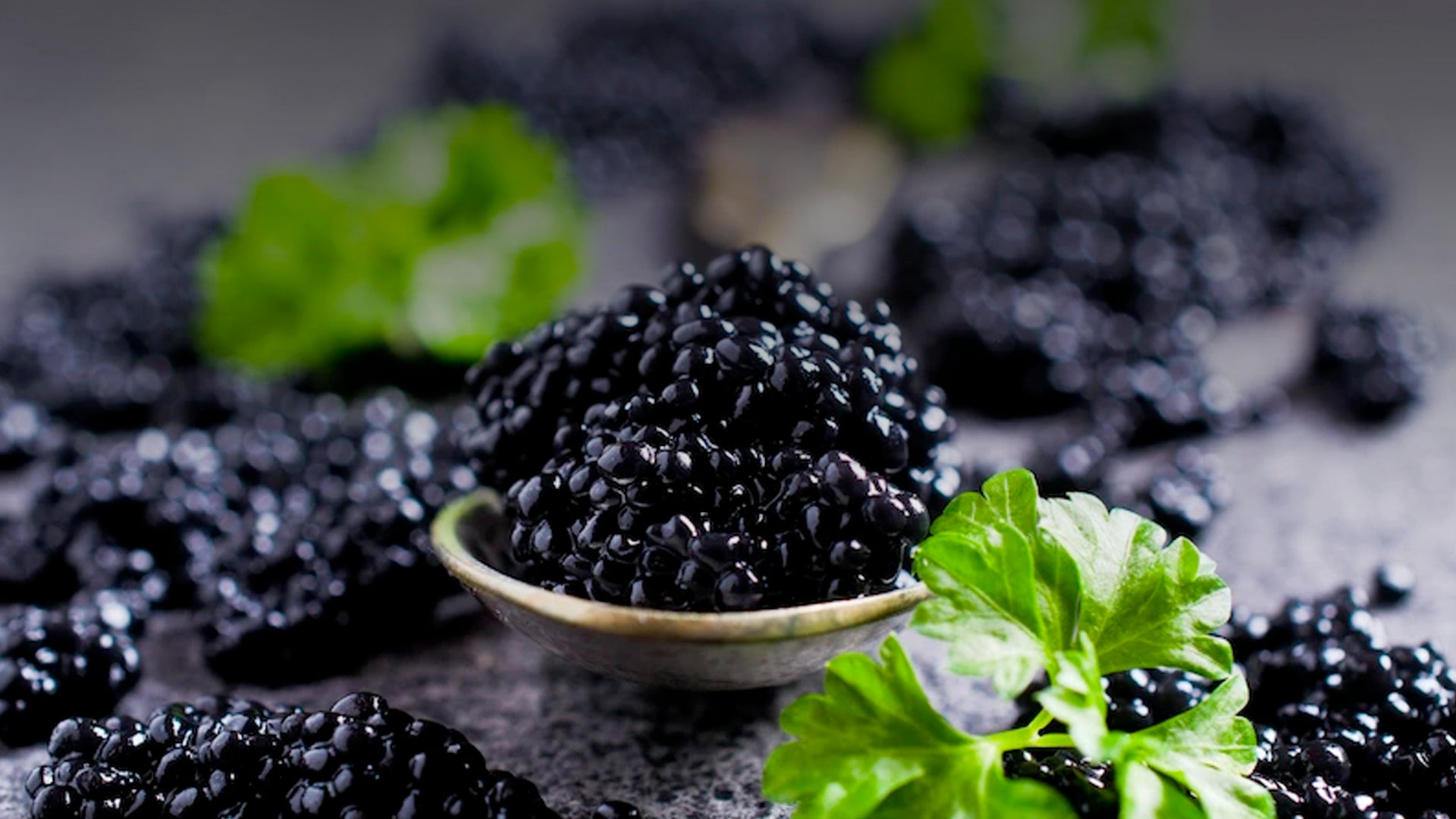
The Storied Heritage of Caviar
The allure surrounding the legendary sturgeon traces back to ancient civilizations, with the Persians, Carthaginians, Greeks, and Romans all extolling its virtues. Esteemed philosophers of antiquity even immortalized this magnificent creature in their literary works.
Spanning an astonishing 250 million years in existence, the sturgeon stands as an enduring testament to the passage of time. Notably, the exquisite roe from the female sturgeon continues to be the coveted foundation of a rare and opulent delicacy: caviar.
However, the trajectory leading to this culinary treasure has evolved, transcending the confines of the confluence between Asia and Europe. In our contemporary era, amidst the pristine natural landscapes of Uruguay in the Southern Hemisphere, sturgeons are meticulously cultivated, yielding some of the most exquisite caviar found anywhere in the world.

A RICH HERITAGE
The Caspian, Black, and Azov Seas, revered as the cradle of its rich heritage, stood as veritable crossroads of opulence, where a convergence of Persian, Arab, Mongol, Asian, Russian, and European cultures intermingled. In this expansive realm, the exchange of silk, gold, spices, jewels, and salt was a testament to the flourishing tapestry of civilizations.Determining the originator of the very first caviar in history remains an enigma. Equally elusive is the etymology of the term itself—an English designation that may trace its roots to the Italian word "caviale," the Tartarian word "khavia," or the Turkish word "khavyar." Some linguists posit that the Turks might have adopted this term from the Greeks, who boasted an ancient tradition of preserving fish roe with salt. The intricate tapestry of caviar's history is as finely woven as the luxurious fabric of the cultures that converged in those splendid seas.
Russia
While the Persians are commonly acknowledged as trailblazers in the realm of caviar production and indulgence, it was the Russians who, during the late 10th century under the reign of Prince Vladimir of Kiev, elevated the craft of caviar to the sophisticated form we recognize in contemporary times. Beyond historical debates, there is unanimous agreement that this delicacy evolved into an authentic cultural symbol of Russia, encapsulating the refined essence of the nation's culinary heritage.

References in History
The earliest documented mention of caviar in its modern form hails from the writings of Batu Khan, circa 1240. During this historical episode, the distinguished grandson of the legendary Genghis Khan, having recently invaded and ravaged Russia with the Mongol army, found himself at a monastery in Uglich. The monks, aiming to honor Batu Khan and his wife Yildiz, orchestrated a grand banquet. For dessert, they presented hot apples adorned with a generous serving of salted sturgeon roe. Although the delicacy did not align with Yildiz's palate, Batu Khan, the formidable guest, reveled in the culinary experience. His appreciation was such that the Russian Orthodox Church's monastery was granted safe passage and remained intact.
From Shakespeare to Louis XIV
Caviar's introduction to Europe occurred in the 14th century when Venetian merchants embarked on expeditions to the Black Sea, returning with barrels filled with these delicate ebony orbs. Despite this arrival, acceptance was gradual; two centuries later, Shakespeare used caviar as a metaphor for the obscure and incomprehensible. Even into the 19th century, European fishermen discarded sturgeon roe, casting it to animals or discarding it along riverbanks.
A captivating chapter in caviar's illustrious history unfolds at the court of Louis XIV, the Sun King. During a Versailles reception, Tsar Peter the Great dispatched a sample of caviar via the Russian ambassador. Legend holds that upon tasting it, the French monarch, in immediate disgust, spat it onto the ground, sparking a diplomatic incident. However, history would later balance the scales: a few centuries on, Paris succumbed to the enchantment of caviar's allure.

The Roaring 20's
As the Russian Revolution, which toppled the Tsars, unfolded in 1917, and the subsequent conclusion of the First World War in Europe a year later, approximately two centuries had elapsed since the burial of Louis XIV. During this era, the memory of his act of insolence had faded into obscurity, and Paris found itself poised to embrace the vivacity of the Roaring Twenties. In the vibrant landscape of the 1920s Ville Lumière, the only absence from the soirées pulsating with Charleston beats, effervescent champagne, and refugee aristocrats was the exquisite addition of caviar.
